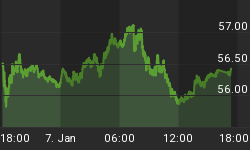Major oil companies are in North American shale plays because they have exhausted more attractive opportunities around the world and must replace reserves to support their stock prices.
Shale gas plays in the U.S. that involve horizontal drilling and hydraulic fracturing were pioneered by independent exploration and production (E&P) companies such as Chesapeake Energy, XTO Energy, Southwestern Energy and Devon Energy beginning in 2003. Major oil companies in the U.S. studied and evaluated these plays decades ago but determined that they were not commercially viable. With the growth of gas production in the Barnett, Fayetteville and Haynesville shale plays, ExxonMobil became the first major to enter the shale arena with its purchase of XTO in early 2010.
Major oil companies exited onshore North America during the mid-1980's to early 1990's because of dwindling opportunities of sufficient size to meet the economic requirements of large organizations. After 20 years of success in deep water offshore West Africa and elsewhere, the best international prospects had been tested. Fiscal terms had worsened and the national oil companies had put many of the better areas off limits to international companies.
U.S. Securities and Exchange Commission (SEC) reserve rule revisions that took effect in January 2010 greatly favored companies in U.S. shale gas plays. These revisions exempted shale reserves from previous requirements to identify lowest known hydrocarbons and only book proven undeveloped (PUD) reserves above that structural level. Producers could now book shale gas PUD reserves in several spacing locations adjacent to a producing well without offering any proof of potential productivity as long as a development plan was in place within 5 years. In fact, there was no necessary requirement to demonstrate the commerciality of the producing well on which PUDs were booked beyond the endorsement of an engineering consulting firm. These endorsements are speculative because of lack of long-term history with shale gas production. Furthermore, the engineering firms are indemnified against liability should their audits be shown to be incorrect.
The SEC rule revisions represent a generous gift to shale gas companies that does not seem to protect or benefit the public in any way. On the contrary, the potential for artificial net asset value inflation may confuse the public about the risks of investing in these companies. The engineering firms that certify and audit reserves have been given an implicit green light by the SEC to use optimistic reserve forecasts because it has established a precedent of accepting the criteria behind them for two years at this writing. Some shale producers now have almost half of their reserves in the PUD classification.
ExxonMobil's 2010 acquisition of XTO was seen by many as proof that shale gas plays were economically viable. Presumably ExxonMobil believed that there were strategic reasons for seeking a shale company acquisition consistent with its efforts in tar sands, sour gas, and tight gas sands projects - in circumstances where XTO offered itself to Exxon. Interestingly, the agreement acknowledged that shale plays offered a way to replace reserves in part thanks to SEC rule revisions that, coincidentally, took effect at the same time as the XTO acquisition.
The U.S. and Canada are among the only countries in the world wih private mineral ownership. This means that leases can be negotiated directly with the mineral owner without requiring government agreement or contracts. Wells can be drilled rapidly compared with overseas time lines, and reserves can be booked as soon as tests confirm the presence of oil or gas. If ExxonMobil had not acquired XTO, 2010 would have been the worst year for reserve replacement in the company's history.
BP acquired Chesapeake's position in the Woodford Shale soon after, and then Petrohawk Energy's position in the Fayetteville Shale. Statoil was a close follower to enter the U.S. shale plays. That company had a lot of cash because of high oil prices but declining production in the North Sea. It also had one of the lowest reserve replacement ratios in the industry. Statoil partnered with Chesapeake in the Marcellus Shale and, shortly after, Total entered into a joint venture with Chesapeake in the Barnett Shale.
Over the next few years, Shell, ConocoPhillips and Chevron took large positions in the Eagle Ford, Haynesville, Marcellus and Horn River plays. BHP Billiton bought Chesapeake's Fayetteville Shale position and, later, acquired Petrohawk including its Eagle Ford Shale and Haynesville Shale wells and acreage. Recently, Statoil acquired Brigham and is now a player in the Bakken Shale play in North Dakota.
Aside from reserve replacement, the other reason for major oil companies to be in North American shale plays is to grow on paper. By booking mostly gas reserves as barrels of oil equivalent (converting the heating or Btu value of gas into is oil equivalent units), they appear to be increasing valuable and fungible oil assets rather than lower-price stranded gas reserves. My view is that major oil companies are in a state of slow liquidation as they sell legacy assets acquired at very low finding costs, and abandon new high-cost high flow rate international opportunities in favor of high-cost low flow rate shale plays.
The underlying and disturbing truth is that the world is running out of large attractive plays to sustain global oil supply. This is why the oil price is high and will remain high unless worsening economic conditions cause demand destruction and lower short-term prices.
















